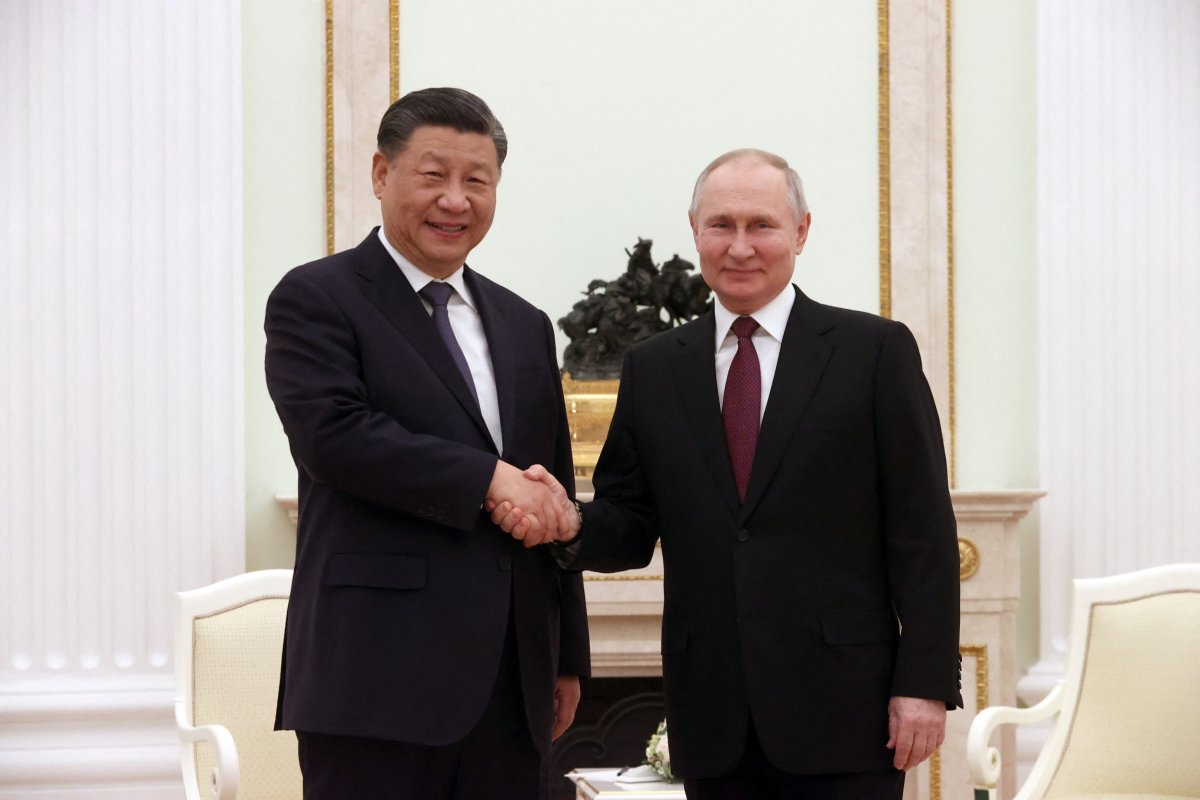China Uses Russia as Testing Ground for Currency Gamble

The Chinese yuan (RMB) is increasingly being used in international transactions by China’s trade partners, particularly Russia, after Russia was largely frozen out of the global financial system after its February 24, 2022, invasion of Ukraine.
As of December 2023, the yuan accounted for about one-third of Russian trade.
“The China-Russia relationship is allowing China to truly test de-dollarization at scale,” Vincent Deluard, director of Global Macro Strategy at financial services company StoneX Group Inc., told Newsweek.

Sergei Karpukhin/AFP via Getty Images
China’s international transactions in the RMB surpassed those conducted in dollars for the first time in the first quarter of 2023, according to a Nikkei analysis.
The yuan is also gaining traction in trade between third-party countries. The Bangladeshi government greenlit a $318 million payment in RMB to Russia’s Rosatom State Atomic Energy Corporation for the construction of the Rooppur Nuclear Power Plant.
The currency is also seeing greater use in the Middle East, Africa and Latin America. In November, China and fellow BRICS member Saudi Arabia signed a $7 billion currency swap agreement.
“Achieving strategic autonomy is China’s guiding star,” Deluard said, emphasizing that reducing dependence on the dollar is crucial to avoiding U.S. leverage and reprisals, as demonstrated by Russia’s situation. “You could take the Russia story as a catalyst.”
Nevertheless, the yuan still represents a small fraction of global payments, rising to 4.5 percent in March while the greenback stayed put at about 47 percent.
Despite Russian President Vladimir Putin’s prediction last year that the U.S. dollar would experience an “irreversible” decline in relevance, it remains dominant. It comprised 58.41 percent of the world’s allocated reserves in the fourth quarter of 2023.
The euro came in second at just under 20 percent, and the yuan was sixth at 2.29 percent, according to International Monetary Fund data.
In response to the punishing international sanctions, Russia’s central bank introduced differentiated reserve ratio requirements last year, targeting currencies of “unfriendly” nations. Banks with liabilities in these currencies must hold 7.5 percent in reserve, while the requirement for other foreign currencies is only 5.5 percent.
China’s efforts to increase the yuan’s use coincide with its rapid stockpiling of gold, oil, copper and other resources. Analysts believe the actions are also aimed at enhancing autonomy.
Deluard compared the strategy to the U.S. creation of the Strategic Petroleum Reserve after recognizing the risk of dependency on Middle Eastern oil.
China-Russia trade has boomed since the invasion of Ukraine, reaching a record turnover of $240 billion last year. But Biden administration secondary sanctions targeting financial flows to Russian industries deemed to support Moscow’s war effort have frustrated business between China and Russia. Russian traders have complained of bottlenecks when settling payments.
Major Chinese lenders, including ICBC, China CITIC Bank and Industrial Bank Co., have reportedly halted payments entirely.
Reuters cited sources last month estimating last month that up to half of Russian companies’ transactions with China are now handled by middlemen from friendly jurisdictions like Hong Kong, Kazakhstan or the United Arab Emirates.
Chinese exports to its northern neighbor fell in March for the first time since the war began, dipping 15.7 percent year on year.
Newsweek reached out to the Chinese Foreign Ministry, U.S. Treasury and Russian Foreign Ministry via written requests for comment.
Uncommon Knowledge
Newsweek is committed to challenging conventional wisdom and finding connections in the search for common ground.
Newsweek is committed to challenging conventional wisdom and finding connections in the search for common ground.





